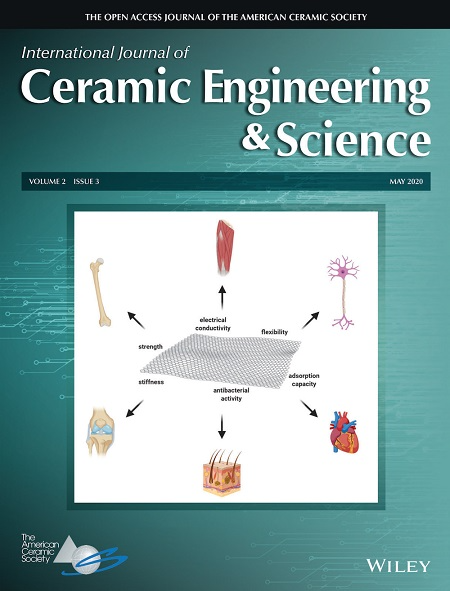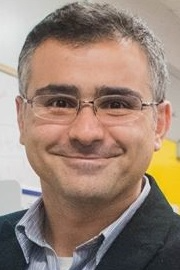In this interview, Ricardo Castro, Chancellor’s Leadership Professor of Materials Science & Engineering at the University of California, discusses the benefits of the Gold Open Access and the benefits it provides.
Please tell us a little bit about yourself and your background.
I’m professor of materials science and engineering at UC Davis, where I also serve as associate dean of Research and Graduate Studies for the College of Engineering. I consider myself the underdog of professors because my whole education is from Brazil – which is quite unusual for a professor in an R01 institution these days. Since my undergrad years, my passion has always been ceramics. My interest came from dreaming about building a rocket after watching a fantastic demonstration of a real miniature turbine running inside a classroom (only in Brazil). But my BSc is in molecular sciences. I had cut some mice open during my education, an experience I still have mixed feelings about! My Ph.D. is in metallurgical and materials engineering, and that was when I started my true path in the ceramics world.
What do you currently do?
While I continue to have my research group, working on fundamental expects of ceramic processing, thermodynamics, and mechanical properties, I now serve as the editor-in-chief of a transformative publication of The American Ceramic Society: the International Journal of Ceramic Engineering and Science.
Tell us about the International Journal of Ceramic Engineering & Science.
IJCES is here to meet very specific needs for ceramic professionals around the globe: a place to publish cutting-edge ideas that are not necessarily finished; papers that are incremental (no shame in that, we need to move the fields progressively); industrial reports on product or technique advancements (with science or true engineering); topics that are not a fit for other sister journals, such as ceramic art, concrete technology, or ceramic education; or simply negative results—yeah, those are as important as the positive ones, but somehow they get ignored and are never published as they are described as "wrong." Negative results are not wrong, they are right, as long as the tests are done properly. So, IJCES is a platform to publish good quality data and ideas within the broad breadth of ceramics.
What is your role with IJCES?
 My role as EIC is to lead the journal to its full potential. IJCES was created to disrupt the field by being a journal that has a strong promotion of papers that reach everyone—researchers, students, and the public, all who are interested in the broadest aspects of ceramics.
My role as EIC is to lead the journal to its full potential. IJCES was created to disrupt the field by being a journal that has a strong promotion of papers that reach everyone—researchers, students, and the public, all who are interested in the broadest aspects of ceramics.
What does Gold Open Access mean?
The boring explanation is that Gold Open Access is a true online open-access journal, with full access to all content from any part of the globe. In contrast, closed access journals are those with subscriptions where one has to pay big dollars to have access to what is supposed to be free—human knowledge! There are some mixed models, such as green open access, which is where the author publishes in a journal and makes a copy available, or hybrids, which have both closed and open access in the same journal.
GOA is what the world needs, is what is fair, and is what will transform and help societies in need. My interest in this was raised when I heard a story of a Ph.D. in biology whose wife contracted an unknown disease. Because of his background, he started researching the cause of the disease. Reading only the abstracts and titles, he spent thousands of dollars downloading papers that were of no help. But acknowledgments of those papers, NIH, NSF, DOE, all these major federal grants are there. As a taxpayer, he felt cheated (as he should), as he was paying twice for that research. It [journal papers] should be open to all, not only for medicine but for all fields, particularly engineering, so we can truly help society.
You started publishing the journal last year. How successful has it been so far?
We had a paper with more than 1,000 downloads in less than a year. For a nascent paper, this is awesome! In fact, it is more than the average ceramics journal. This is because we’re open, we promote it to help the authors, we provide a unique publication experience with quick quality reviews, and it has the strong brand name of the American Ceramic Society.
Why would researchers want to publish in IJCES?
The journal is a modern publication platform, not your old subscription journal. Everyone will read your work because it is free and easy to find. That’s what researchers want: someone who reads the results of many years of hard work. IJCES provides this by stamping the ACerS seal on it and launching it loud and fast. It is the journal to submit your core radical ideas that only have preliminary data and are still controversial, but if you send in a proposal without publishing, someone may figure it out and publish before you do. IJCES is the place to secure your new ideas, as there is no need for completed work. Perspective ideas are very welcome and keep the field hot.
Some of our superstar papers are from industries, though. By publishing years of development in a specific ceramic product, they are helping society, researchers, and educators in understanding industrial needs while improving their brand's impact.
As any new journal, we do not have an impact factor (IF) yet, but we’ll get it soon enough. In the meantime, the papers are all getting the impact they deserve with the personal touch that IJCES provides.
What are some of the research topics authors can submit?
If it has to do with ceramics, you can submit it. Arts, cement, scaffolds, membranes, energy solutions, nuclear, processing, etc., are all part of the journal. We aim for high-quality work; we aim for ideas—for negative data or educational strategies (yes, we have room for that). We only ask that the research is "sound," i.e., well written, clear, reproducible, and correct.
For more information on the International Journal of Ceramic Engineering & Science, visit this link.
About Ricardo Castro
 Ricardo Castro is Chancellor’s Leadership Professor of Materials Science & Engineering at the University of California, Davis, where he also serves as the associate dean of Research and Graduate Studies for the College of Engineering. He joined UC Davis in 2009 and is head of the Nanoceramics Thermochemistry Laboratory, dedicated to providing fundamental understanding, using experimental thermodynamics of ceramic nanomaterials and their behavior under processing conditions and operation at extreme environments.
Ricardo Castro is Chancellor’s Leadership Professor of Materials Science & Engineering at the University of California, Davis, where he also serves as the associate dean of Research and Graduate Studies for the College of Engineering. He joined UC Davis in 2009 and is head of the Nanoceramics Thermochemistry Laboratory, dedicated to providing fundamental understanding, using experimental thermodynamics of ceramic nanomaterials and their behavior under processing conditions and operation at extreme environments.
Castro has a Ph.D. in metallurgical and materials engineering from the University of São Paulo, Brazil, and a bachelor's in molecular sciences from the same university. He has published over 115 scientific articles and has several outreach programs in course, including a program on the science of superheroes. He is a member of the American Ceramic Society and editor-in-chief of the new International Journal of Ceramic Engineering and Science. Prior to joining Davis, Castro was a professor at Fundação Educacional Inaciana Pe. Saboia de Medeiros (FEI), a catholic university in São Bernardo do Campo, Brazil. FEI is an engineering school responsible for educating engineers for the biggest automotive complex in Latin America.
Early in his career, Castro was awarded the 2011 Department of Energy Early Career Program Award and the National Science Foundation Career Award, two of the most competitive awards for young researchers. He was also awarded the 2011 Society of Hispanic Professional Engineering Young Investigator Award and the 2012 Outstanding Junior Faculty Award by the UC Davis College of Engineering. Castro was honored as 2013–2014 UC Davis Chancellor’s Fellow, the 2014 Robert L. Coble Award for Young Scholars by the American Ceramic Society; the 2015 Global Young Investigator Award by ACerS Engineering Ceramics Division, and the 2015 Stig Sunner Memorial Award by the Calorimetry Conference. In 2019, Castro was elevated to Fellow of the American Ceramic Society.
Disclaimer: The views expressed here are those of the interviewee and do not necessarily represent the views of AZoM.com Limited (T/A) AZoNetwork, the owner and operator of this website. This disclaimer forms part of the Terms and Conditions of use of this website.